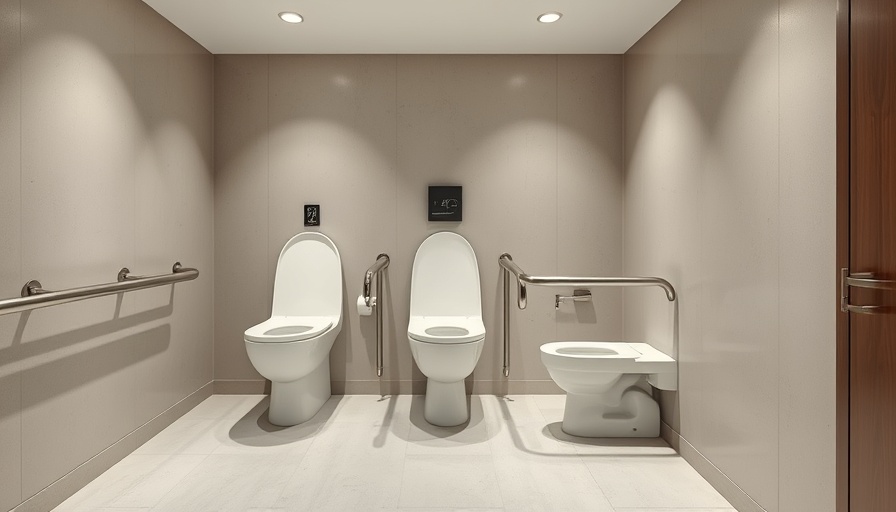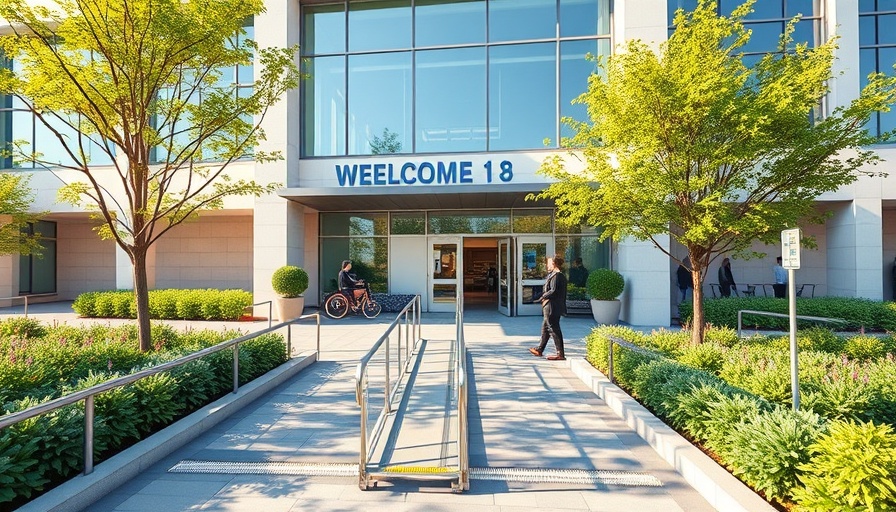
Ensuring Accessible Toilets: Why It Matters in Toms River
In the vibrant community of Toms River, the importance of accessible toilets extends far beyond mere compliance; it reflects a commitment to inclusivity. The Americans with Disabilities Act (ADA), implemented in 1990, has paved the way for various essential changes in public facilities, particularly restrooms. Understanding ADA compliance is crucial for local businesses, government entities, and community members alike, as it fosters an environment where everyone feels valued and included.
Creating a Safe Environment: The Importance of ADA Compliance
ADA compliance is not only a legal requirement but a vital component of a welcoming community. Accessible toilets allow individuals with disabilities to manage their personal needs safely and comfortably. Facilities that prioritize accessibility send a powerful message: all patrons are valued. This inclusivity goes a long way in enhancing customer satisfaction and loyalty, effectively attracting a diverse range of clientele.
Key Features of Accessible Toilets: What You Need to Know
According to ADA guidelines, several critical features must be integrated into accessible toilets. Location is paramount; these restrooms must be easy to locate with clear signage, including Braille for the visually impaired. Doors should measure at least 32 inches wide to accommodate wheelchairs and operate effortlessly, allowing easy access for those with limited hand strength.
Dimensions and Layout: Planning for Maneuverability
For an accessible toilet to function effectively, proper dimensions and layout are essential. Adequate space is required for maneuverability, particularly for wheelchair users. A clear floor space of at least 60 inches in diameter allows individuals to turn freely, while grab bars must be installed according to specific height and distance guidelines to provide necessary support. The positioning of the toilet is also crucial, facilitating access to fixtures without obstruction.
Examples from Toms River: Best Practices in Action
Several local businesses have taken significant strides to enhance their restroom accessibility. For instance, a popular café in Toms River recently undertook renovations to ensure their restroom meets ADA standards. By installing spacious toilets, proper signage, and thoughtful layout changes, they have created an inclusively welcoming space for all patrons. Such initiatives not only comply with regulations but also improve overall customer experiences.
Future Trends in Accessibility: What to Anticipate
As we look ahead, the emphasis on accessibility is expected to grow. Emerging technologies and materials may streamline the design of accessible toilets, making it easier for businesses to ensure compliance. We may witness increased utilization of automatic doors, hands-free faucets, and innovative toilet designs that adapt to the user’s needs. With a mounting understanding of the importance of inclusivity, communities like Toms River can lead the way toward creating spaces that prioritize accessibility.
Actions You Can Take as a Business Owner
For business owners and facility managers, understanding ADA compliance goes hand in hand with enhancing customer experiences. Prioritizing accessible toilets can lead to increased patronage and foster a sense of belonging. Here are a few actionable steps you can take:
- Review your existing facilities against ADA guidelines and make necessary adjustments.
- Consult with local disability advocates to understand community needs.
- Educate staff about the importance of accessibility and inclusivity.
Common Misconceptions About Accessible Toilets
One common misconception relating to ADA-compliant restrooms is the belief that it requires excessive space and investment. In reality, many adjustments can be made incrementally without overwhelming costs. Making even small changes to improve accessibility can yield significant benefits for both businesses and the community.
As Toms River continues to embrace inclusivity, understanding and implementing ADA compliance in accessible toilets is paramount. Investing in these features not only enhances safety and convenience but also reflects a commitment to serving the needs of all community members.
To learn more about ADA compliance and how it can positively impact your business, consider exploring resources available through local community organizations or consult with experts specializing in regulatory and compliance guides. Everyone deserves dignity and accessibility, and you can lead the way toward a more inclusive tomorrow!
 Add Row
Add Row  Add
Add 




Write A Comment